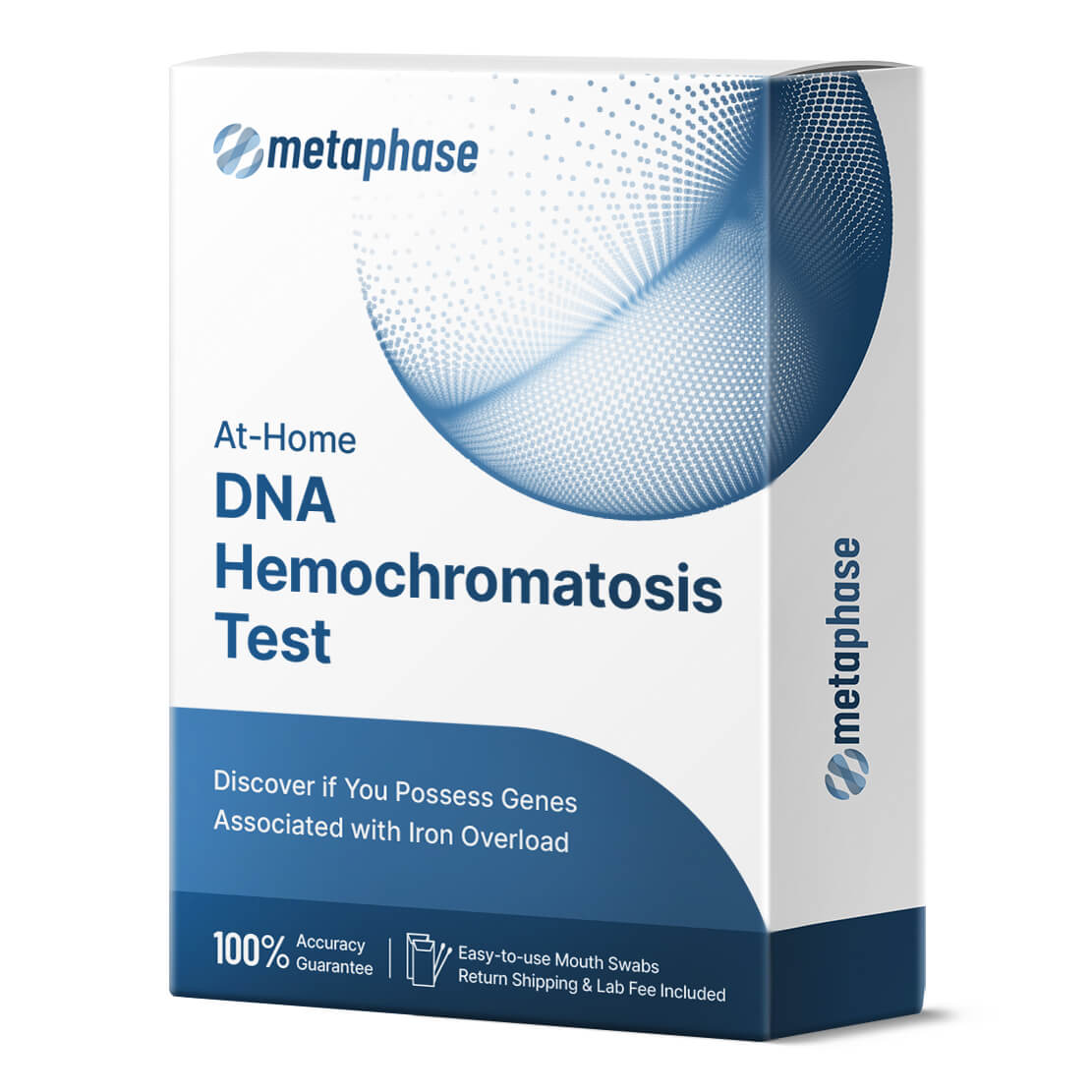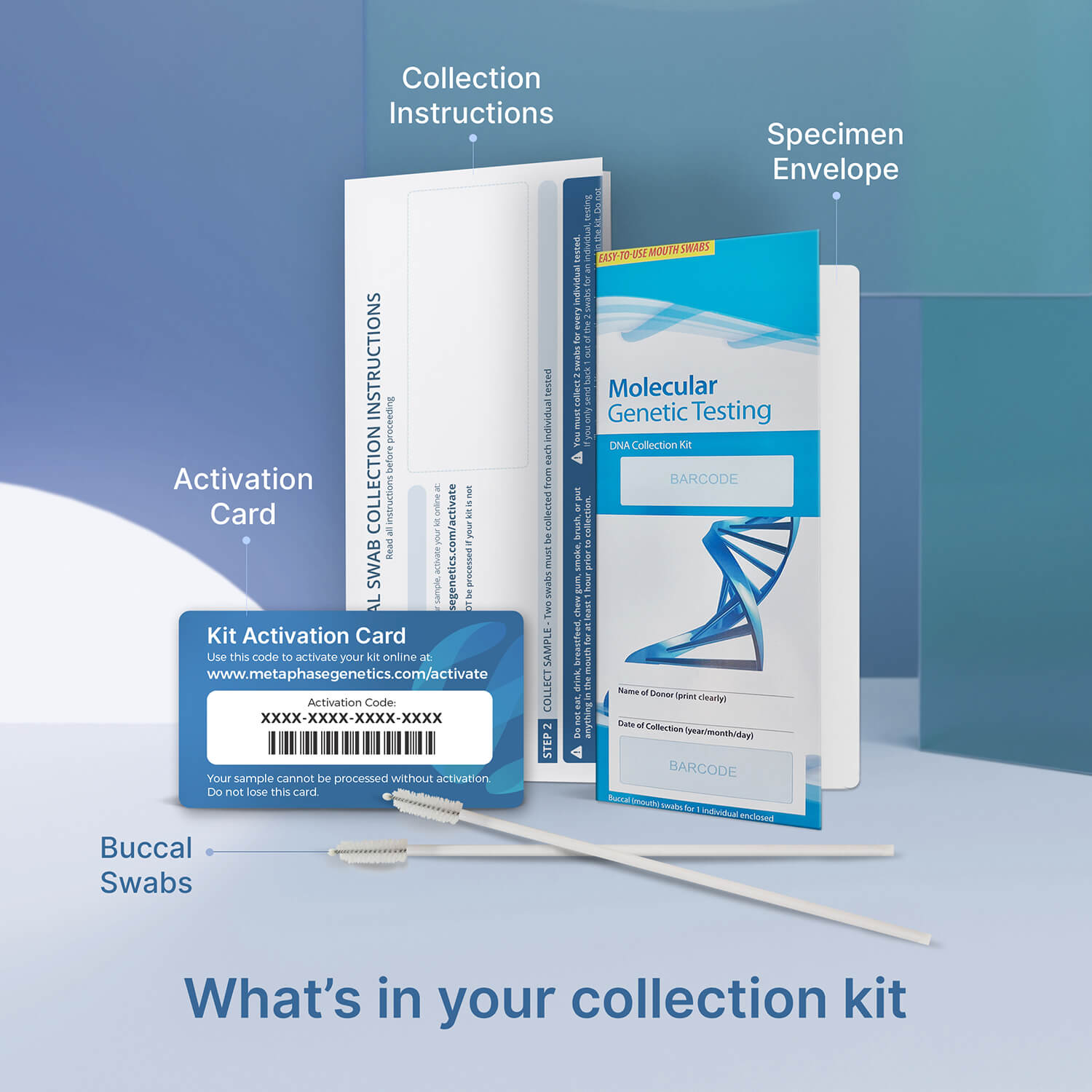DNA Hemochromatosis Test
$195.00
Do you have European ancestry? It’s possible that you’re descended from the Vikings. People with Viking ancestry are more likely to carry HFE mutations that can raise the risk of hereditary hemochromatosis. To determine if you’re at risk, consider taking this DNA test.
Approximately one in nine people of European ancestry carry at least one HFE mutation, while one in 200 inherit two defective copies, putting them at a higher risk of hemochromatosis. This DNA test can identify the most prevalent mutations in the HFE gene.
- Collection method: Buccal swabs
- Private and confidential online results
Description
Hereditary hemochromatosis is the most prevalent genetic disorder in the western world. This condition is characterized by excessive absorption of iron from the diet, resulting in iron accumulation in organs and tissues, leading to organ damage and severe health complications.
Although iron accumulation starts early in life, symptoms typically do not manifest until later stages. Men, on average, develop symptoms between the ages of 30-50, whereas women are typically diagnosed after 50, about 10-15 years after menopause.
Early detection of hemochromatosis is crucial as it can be easily treated. Treatment involves the removal of excess iron from the bloodstream every 2-4 months. However, if the diagnosis is made at later stages after organ damage has occurred, the damage is irreversible.

Description
Hereditary hemochromatosis is the most prevalent genetic disorder in the western world. This condition is characterized by excessive absorption of iron from the diet, resulting in iron accumulation in organs and tissues, leading to organ damage and severe health complications.
Although iron accumulation starts early in life, symptoms typically do not manifest until later stages. Men, on average, develop symptoms between the ages of 30-50, whereas women are typically diagnosed after 50, about 10-15 years after menopause.
Early detection of hemochromatosis is crucial as it can be easily treated. Treatment involves the removal of excess iron from the bloodstream every 2-4 months. However, if the diagnosis is made at later stages after organ damage has occurred, the damage is irreversible.
Our testing laboratory is AABB Accredited, ISO/IEC 17025 Certified and participates in the CAP proficiency testing program.
Technical Info
This DNA test specifically detects three variations in the HFE gene that are linked to a higher risk of developing hemochromatosis.
Likelihood of Symptoms
To be at an elevated risk of hemochromatosis, an individual must inherit two defective copies of the HFE gene. Carriers, who possess one normal and one defective HFE gene, are usually not affected.
While individuals who inherit two defective HFE genes have an increased risk of hemochromatosis, many of them do not present any symptoms of the disease. Other modifying genes or external factors such as alcohol abuse are believed to contribute to the risk of hemochromatosis in genetically susceptible individuals.
At-Home DNA Testing Steps
STEP 1
Order Kit
Order the private DNA test kit online.
STEP 2
Collect Samples
Follow the easy instructions for collecting a mouth swab sample from the participants. The sample is collected in just seconds by rubbing the swabs provided in the kit gently inside the mouth.
STEP 3
Receive Results
After sample collection, return the samples to our laboratory using the return packaging included in your test kit. Results are available online. You are welcome to call our laboratory at any time to check on your test and to get preliminary results over the telephone using your password and file number. Official results documents are sent to you by mail or email after the test is complete.




